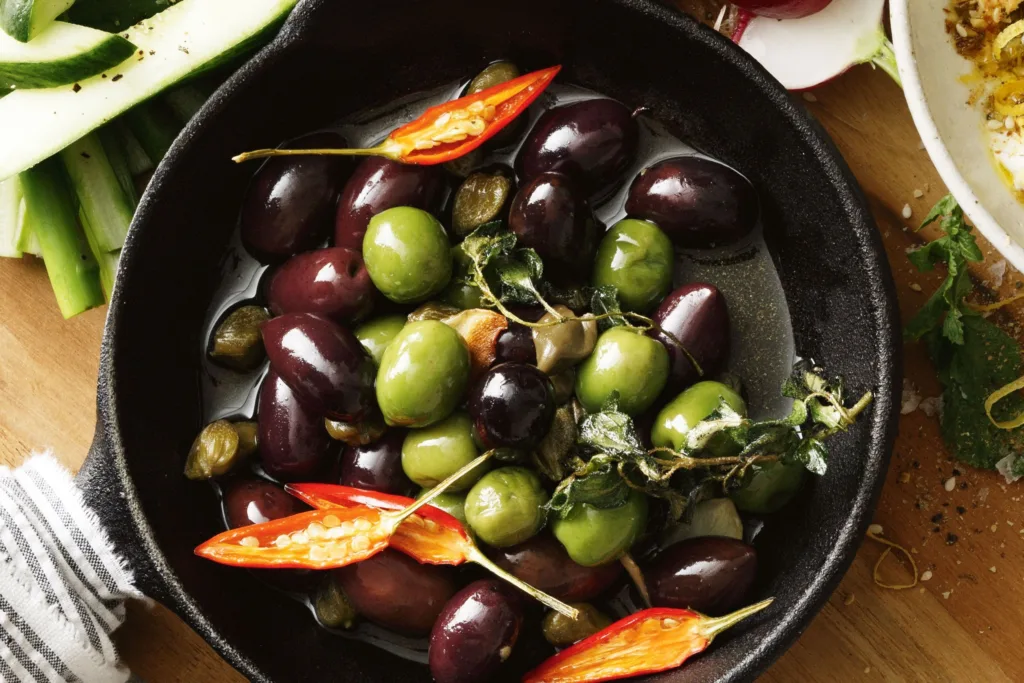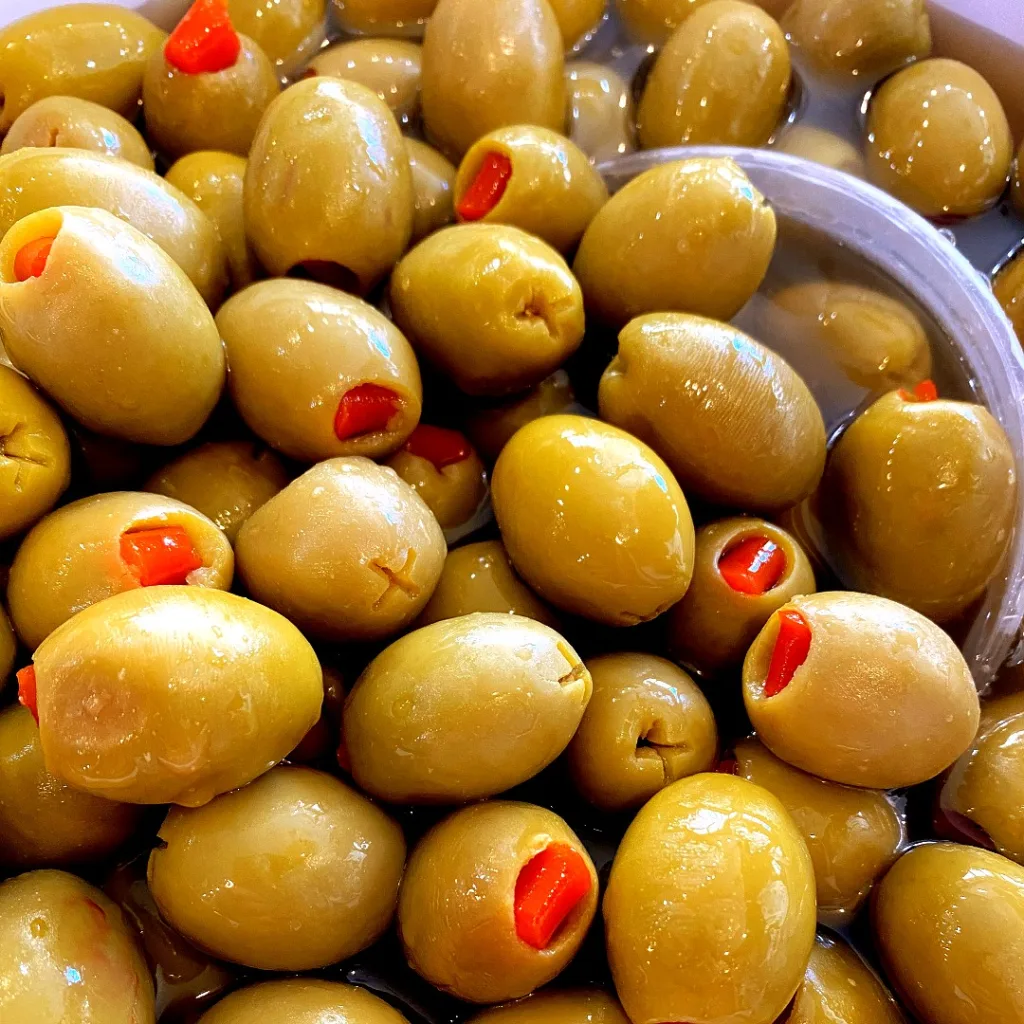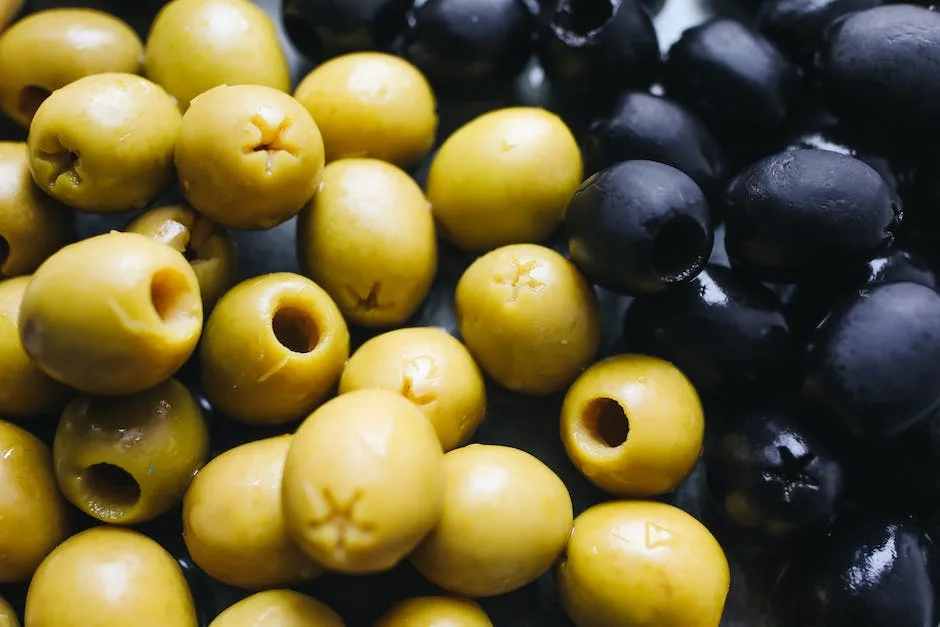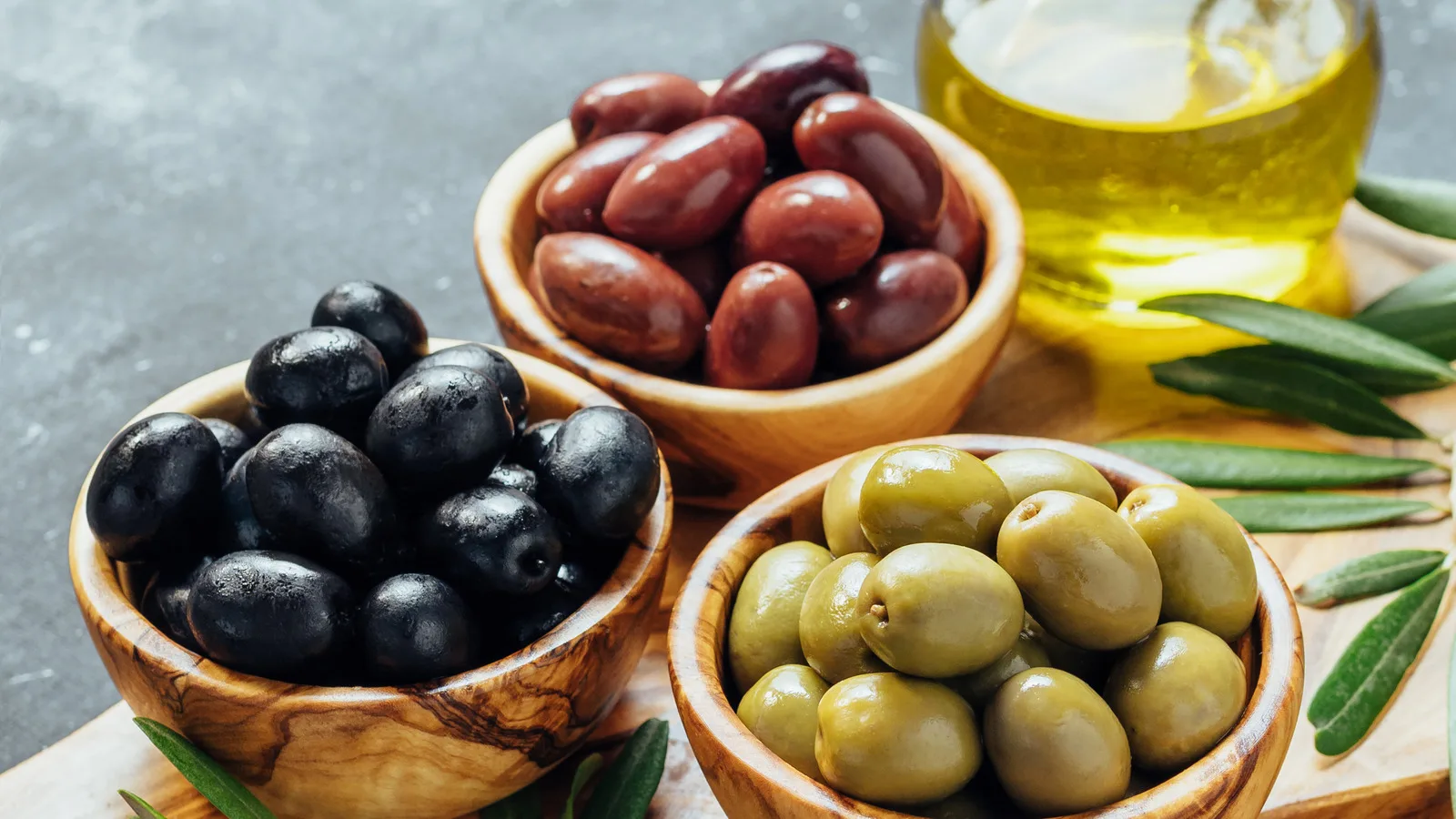Raise your hand if you’ve tried more diets than you can count trying to shed a few pounds. I’m right there with you! As someone who’s been on that rollercoaster far too many times, I’m thrilled to share what I’ve learned about a way of eating that actually keeps weight off long-term. I’m talking about the Mediterranean diet.
Now, you’ve probably heard of this diet before. But do you know why it’s so effective for weight loss and overall health? It all comes down to one key ingredient: olive oil. Yes, olive oil! Stay with me here, because I’m going to let you in on how olives and olive oil can help you slim down and feel your best. Get ready for some inspiration from the sunny Mediterranean!

Why the Mediterranean Diet is a Weight Loss Winner
The Mediterranean diet pattern is inspired by the traditional cuisines of Greece, Italy, Spain and other countries bordering the Mediterranean Sea. This way of eating focuses on simple, minimally processed plant foods like fruits, veggies, beans, nuts, seeds and whole grains. Fish, poultry, eggs and yogurt provide lean protein sources. Red meat is enjoyed only occasionally. What else sets this diet apart? Wine in moderation and a serious supply of olive oil!
Study after study has shown that following a Mediterranean style diet promotes weight loss and reduces heart disease risk. But why is this diet so effective? The abundance of fiber from all those plants means you stay fuller longer. Protein and healthy fats also help regulate appetite and blood sugar. By emphasizing nutrient-dense whole foods over processed fare, you slash calories without feeling deprived. Now that’s my kind of diet!
But at the heart of the Mediterranean diet lies its shining star ingredient: olive oil. Keep reading to find out how olives and olive oil can help you win the battle of the bulge.
Olives – Tiny but Mighty Nutritional Powerhouses
Olives grow on trees and are technically considered a fruit, even though we use them more like a vegetable. Don’t be fooled by their small size – these little green or black gems pack a serious nutritional punch!
A 3.5 ounce serving of olives (about 1/4 cup) delivers 115 calories. Not bad at all! Now here’s the really good part – over 75% of those calories come from monounsaturated fatty acids called MUFAs. The main MUFA is oleic acid, the same beneficial fat found in avocados and certain oils. MUFAs are your waistline’s best friend because they help regulate appetite hormones, control blood sugar, and decrease harmful belly fat.
In addition to their wealth of healthy fats, olives provide powerful antioxidants like polyphenols, flavonoids, and phytosterols. Say that five times fast! These plant compounds reduce inflammation in your body and protect your cells from damage. Eating olives may also decrease your risk for heart disease, cancer, osteoporosis and other chronic illnesses.
Olives are rich sources of vitamin E, iron, copper and calcium too. It’s safe to say these little flavor bombs are nutritional overachievers! Now let’s look at how olive oil continues the goodness of olives.

Uncovering the Secrets of Liquid Gold – Olive Oil!
Olive oil is simply the extracted oil from pressed whole olives. This fragrant golden liquid is minimally processed, so it retains many of the same healthy fats, plant nutrients and antioxidants as the olive fruit itself. There are different grades of olive oil to be aware of:
- Extra virgin comes from the first cold pressing of olives and has the boldest taste and most nutrients. It’s the good stuff!
- Virgin olive oil also comes from the first pressing, with a slightly less intense olive flavor.
- Pure olive oil is a blend of virgin and refined olive oil for a very mild taste.
- Light olive oil is highly refined and filtered to be neutral in flavor.
- Extra light olive oil falls into the same category – very refined with little odor or taste.
While the less processed forms of olive oil are highest in antioxidants, even the light varieties are predominantly monounsaturated fat and confer health perks.
Here’s the really exciting part – a growing body of research shows olive oil is a slimmer’s dream! Its MUFAs help you feel satiated after eating, regulating appetite hormones. Olive oil also helps empty food more quickly from your stomach and improves intestinal motility. Adding more olive oil to your diet may lower systemic inflammation too. Taken altogether, it’s easy to see why olive oil is linked time and again to easier weight management.

Infusing Your Diet with Olives and Olive Oil
Want to step up your olive oil game but aren’t sure where to start? Have no fear – I’ve got you covered with tons of delicious ways to eat more olives and olive oil every day:
- Toss olives into salads, grain bowls, tacos – you name it! The briny, savory flavor amplifies so many dishes.
- Mix chopped olives into hummus, tapenades, ratatouille and pasta sauce for a nutritional bonus.
- Drizzle extra virgin olive oil over avocado toast or ricotta toast for next level goodness.
- Sauté up veggies in olive oil and aromatics like garlic and oregano. Bellisimo!
- Roast cauliflower, carrots, Brussels sprouts and other veggies with a drizzle of olive oil before oven roasting.
- Make homemade salad dressings with olive oil, vinegar, mustard, herbs and spices.
- Dip crusty bread into a mix of olive oil, balsamic vinegar and seasonings for an appetizer.
- Add olive oil to smoothies or morning yogurt bowls if you’re feeling adventurous!
- Sneak olive oil into baked goods like muffins, quick breads and zucchini bread.
When it comes to portion sizes, a little olive oil goes a long way. Just 1-2 tablespoons per day is plenty to gain benefits. Too much of even a healthy fat can lead to excess calories. As for olives, a serving of 1/4 cup makes the perfect snack or mini meal accompaniment.
The key is combining olives and olive oil with all the other nourishing Mediterranean diet foods – lean proteins, whole grains, fruits and veggies. Before you know it, you’ll be infusing that Mediterranean flavor into everything!

Parting Thoughts on Embracing the Mediterranean Lifestyle
If you made it this far, thanks for sticking with me! I hope you’re inspired to take a fresh look at incorporating olives, olive oil and other Mediterranean diet principles into your own lifestyle. This is a realistic, sustainable way of eating that doesn’t deprive you of joy and flavor. After trying what feels like a million different diets, the Mediterranean approach is one I can see myself following lifelong.
Of course, changing habits doesn’t happen overnight. Start slowly by adding an extra serving of veggies at lunch, sampling a new olive variety as a snack, or drizzling your dinners with a little olive oil. Small steps like these really do make a big difference over time. You’ve totally got this!
For more Mediterranean diet tips and recipes, be sure to sign up for our newsletter below. We’d also love to hear any questions you have! Let’s continue this conversation about eating better, living well and enjoying every moment.
Thank you for reading this post, don't forget to subscribe to our free newsletter
!
